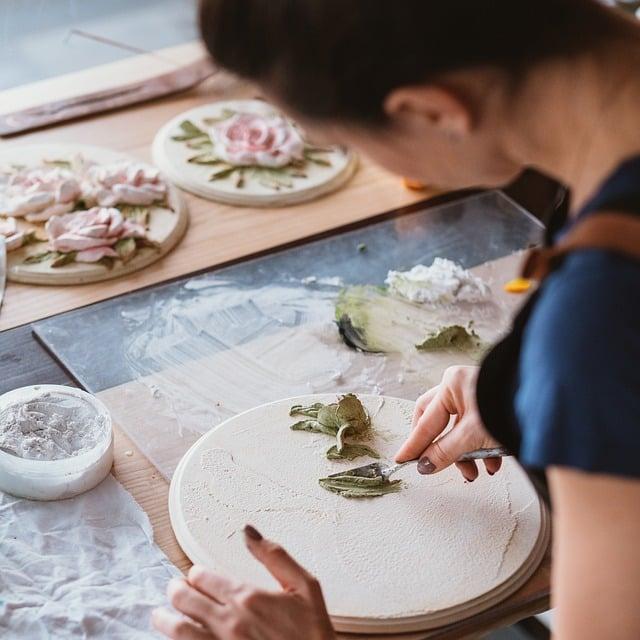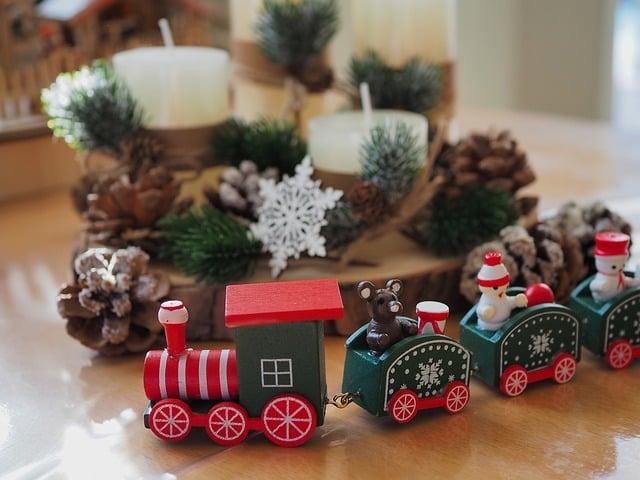In a quaint village, a young girl named Elara discovered an ancient wreath hidden in her grandmother’s attic. Intrigued, she learned that the wreath symbolized unity and the cycle of life. Each leaf represented a season, while the circular shape signified eternity. Inspired, Elara crafted her own wreath, weaving in flowers from her garden. As she hung it on her door, neighbors began to gather, sharing stories and laughter. The wreath became a symbol of connection, reminding everyone that life, like the seasons, is best celebrated together.
Table of Contents
- Exploring the Historical Significance of Wreaths in Various Cultures
- The Symbolism of Wreaths: From Victory to Remembrance
- Crafting Your Own Wreath: A Personal Touch to Symbolic Meaning
- Choosing the Right Wreath for Every Occasion: Tips and Recommendations
- Q&A

Exploring the Historical Significance of Wreaths in Various Cultures
The use of wreaths spans across numerous cultures and epochs, each imbuing this circular form with distinct meanings and traditions. In ancient Greece, wreaths made of laurel leaves were awarded to victors in athletic competitions, symbolizing triumph and honor. Similarly, the Romans adopted this practice, using wreaths to signify military victories and civic achievements. Beyond the realm of victory, wreaths have also been associated with the divine; in many cultures, they are seen as offerings to gods or as symbols of eternal life, reflecting the cyclical nature of existence. The circular shape of the wreath itself represents unity and the interconnectedness of life, making it a powerful emblem across various traditions.
In addition to their celebratory connotations, wreaths have also played a significant role in mourning and remembrance. In many cultures, such as in Eastern European traditions, wreaths made of evergreen branches are placed on graves as a symbol of everlasting life and the continuity of the spirit. This practice highlights the dual nature of wreaths as both celebratory and somber, bridging the gap between life and death. Furthermore, in modern contexts, wreaths are often used during holidays and memorials, serving as a reminder of the cycles of life and the importance of honoring both joyous and sorrowful moments. The versatility of wreaths across different cultures underscores their profound significance, making them a timeless symbol of human experience.

The Symbolism of Wreaths: From Victory to Remembrance
The wreath, a circular arrangement of flowers, leaves, or stems, has long been a powerful symbol across various cultures and epochs. Its circular shape, devoid of a beginning or end, represents **eternity** and the **cyclical nature of life**. In ancient Greece, wreaths made of laurel leaves were awarded to victors in athletic competitions, signifying **triumph** and **honor**. This tradition has evolved, with modern wreaths often adorning the heads of champions and leaders, embodying the spirit of achievement and the pursuit of excellence. The laurel, in particular, has become synonymous with victory, reminding us that success is often a journey marked by perseverance and dedication.
Beyond victory, wreaths also hold profound significance in the realm of remembrance and mourning. They are commonly used in funerals and memorials, symbolizing the **continuity of life** and the **everlasting bond** between the living and the deceased. The circular form of the wreath serves as a poignant reminder that while life may end, love and memories endure. In this context, wreaths are often crafted from evergreen materials, representing **immortality** and the hope of renewal. As such, they bridge the gap between celebration and sorrow, encapsulating the duality of human experience and the deep connections we share with one another, both in life and in memory.

Crafting Your Own Wreath: A Personal Touch to Symbolic Meaning
Creating your own wreath is not just an artistic endeavor; it’s a heartfelt expression of your personal journey and the meanings you wish to convey. Each element you choose can reflect your unique story, transforming a simple decoration into a powerful symbol. Consider incorporating materials that resonate with you, such as:
- Seasonal Foliage: Use flowers or leaves that represent the time of year, celebrating nature’s cycles.
- Personal Mementos: Add items that hold sentimental value, like family heirlooms or travel souvenirs.
- Color Schemes: Choose colors that evoke specific emotions or memories, creating a visual narrative.
As you weave together these elements, think about the symbolism behind your choices. A wreath can signify various themes, from renewal and hope to unity and protection. By crafting your own, you infuse it with your intentions, making it a living testament to your values and beliefs. Whether you hang it on your door or display it indoors, your personalized wreath becomes a conversation starter, inviting others to share in the story it tells. Embrace the creative process, and let your imagination guide you in crafting a piece that is as meaningful as it is beautiful.

Choosing the Right Wreath for Every Occasion: Tips and Recommendations
When selecting a wreath, it’s essential to consider the occasion and the message you wish to convey. For festive celebrations like Christmas or Thanksgiving, opt for wreaths adorned with traditional elements such as pinecones, berries, and vibrant ribbons. These wreaths not only enhance the holiday spirit but also symbolize warmth and togetherness. In contrast, for more somber occasions like funerals or memorials, choose wreaths that feature muted colors and natural materials, such as white lilies or eucalyptus, which convey respect and remembrance.
Additionally, personalizing your wreath can add a unique touch that resonates with the event. Consider incorporating **seasonal flowers** or **favourite colors** to reflect the personality of the individual or the essence of the occasion. For weddings, a wreath made of fresh blooms can symbolize love and new beginnings, while a simple, elegant design can be perfect for a housewarming gift. Remember to think about the **size** and **placement** of the wreath as well; a larger wreath can make a bold statement on a front door, while smaller ones can be charming accents on tables or walls.
Q&A
-
What does a wreath symbolize?
A wreath is often seen as a symbol of victory, eternity, and remembrance. Traditionally made from leaves and flowers, it represents the cycle of life and the continuity of nature.
-
Are there different meanings for wreaths in various cultures?
Yes, wreaths carry different meanings across cultures. For example, in ancient Greece, they were awarded to victors in athletic competitions, while in Christianity, they are often used during Advent to symbolize hope and the coming of Christ.
-
What occasions are wreaths commonly used for?
Wreaths are versatile and can be used for various occasions, including holidays like Christmas, funerals for remembrance, and celebrations such as weddings or anniversaries.
-
How can I incorporate wreaths into my home decor?
Wreaths can enhance home decor by being displayed on doors, walls, or as centerpieces. Seasonal wreaths can reflect the changing times of the year, adding a fresh touch to your space.
the wreath stands as a timeless symbol, weaving together themes of victory, remembrance, and unity. Whether adorning a door or gracing a memorial, its significance transcends cultures, inviting us to reflect on life’s enduring cycles.

大家好,我是彼得潘,專業的手法身體治療師。我喜歡探索和研究各種主題,並透過與人工智慧的合作分享專業、實用、有趣的文章。我們定期進行人工審核,以確保內容的準確性。如果您發現文章中有任何不準確的地方,請隨時與我們聯繫,我們會及時糾正。您可以透過 [email protected] 與我們聯繫。



